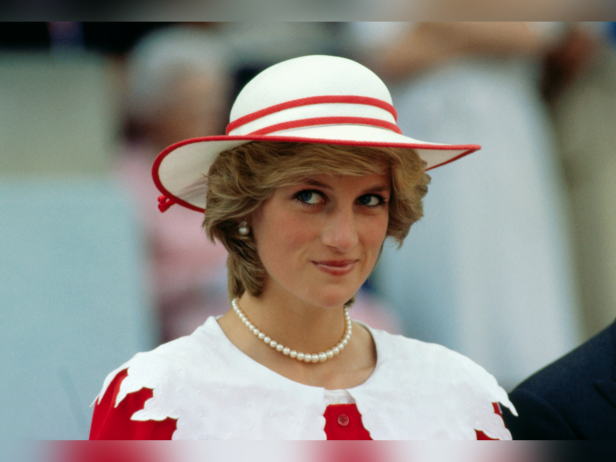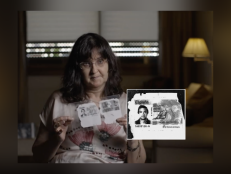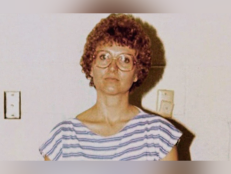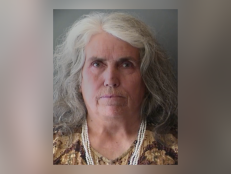The Controversial Death Of Princess Diana: 5 Things To Know
Princess Diana's death made international headlines in 1997 and has been the subject of countless conspiracy theories ever since.

Bettmann via Getty Images
On August 31, 1997, the world watched in shock as the news broke that Diana, Princess of Wales, was dead.
Princess Diana had become an icon all over the world following her 1981 marriage to — and subsequent 1996 high-profile divorce from — from Charles, Prince of Wales.
Diana was known for her charity work, her status as a fashion icon, and her openness, which caused discord within the royal family.
After her separation, Diana controversially lifted the lid on life inside palace walls in an interview with the BBC's Martin Bashir. In the interview, she openly discussed allegations about an affair with Major James Hewitt, battles with bulimia, and Charles's alleged affair with Camilla Parker Bowles.
After the divorce, Diana began dating Dodi Al-Fayed. Dodi was an Egyptian socialite and son of Mohammad Al-Fayed, a billionaire whose business holdings included the Harrods department store in London and the Hotel Ritz in Paris.
The couple was riding in the back of a Mercedes-Benz S280 being driven through the Point de l'Alma tunnel in Paris when the car crashed.
Diana; Dodi; and the driver, Henri Paul; were all killed. The sole survivor of the crash was Diana's bodyguard, Trevor Rees-Jones.
While the media initially suggested paparazzi, who followed the car, could be to blame, a French judicial investigation found the driver of the Mercedes at fault.
Since that day, Diana's death has made international headlines and been the subject of countless conspiracy theories.
Here are five things to know about Diana's death.
The paparazzi followed Diana and Dodi on the night they died.
On that fateful night, photographers were following the couple as they traveled from the Hotel Ritz to Dodi's apartment.
Prince William later spoke out about how much the press, whom he said pursued his late mother like a "pack of dogs," upset her.
Driver Henri Paul started on the "preferred" route usually taken to avoid traffic on the Champs-Elysées, but he veered off before the tunnel, according to a report by Metropolitan Police.
He also did not take an exit road, which led to claims that the route was purposely blocked to lure him into a planned crash scene.
Investigators debunked this theory, claiming Paul, who had been drinking, was driving too fast and lost control. His blood-alcohol level was measured and found to be more than three times the threshold for drunk driving under French law.
British and French police investigations blamed the crash on Paul, stating alcohol impaired his judgement and he was driving recklessly.
There were rumors of a mysterious white car, which was never found.
Officially, only the black Mercedes that Diana and Dodi were riding in was involved in the accident.
But several witnesses said they saw a white Fiat Uno or another light-colored car driving haphazardly away from the scene, according to the Operation Paget report, a police investigation into conspiracy allegations regarding Diana’s death.
Investigators reportedly found white paint on the side of the black Mercedes. That led to speculation that the paint had come from photojournalist James Andanson, who often took photos of Princess Diana and owned a white Fiat Uno.
Adanson told police that he was at his home at Lignieres, 177 miles south of the French capital, at the time of the crash. According to the Evening Standard, tests later showed the paint flecks on the Mercedes could not have come from Adanson's vehicle.
At an inquest, the court heard French police had not been able to trace the car in question, according to The Guardian.
Adanson died in a car fire in the woods about three years after the accident. Police later ruled his death a suicide, USA Today reported.
Dodi Al-Fayed's father and others insisted Diana was engaged and pregnant at the time of her death.
Some sources claimed that Diana could have been pregnant with Dodi's child at the time of her death. Mohammad Al-Fayed has long claimed that the royal family found out about the pregnancy and were desperate to keep an Egyptian Muslim out of the family.
In 2003, a French policeman told UK reporters that Diana had been pregnant and that documents confirming this were kept hidden, according to The Independent.
But medical reports said there is no evidence that Princess Diana was pregnant when she died.
In 2004, the Operation Paget inquest was set up after the Queen's coroner asked UK police to look into several questions about the crash.
Forensic scientist Professor Angela Gallop explained that because blood transfusions the princess received after the accident might have complicated the pregnancy test, they conducted a test on blood recovered from the carpet on the footwell of her seat in the Mercedes.
Gallop's team confirmed that Diana was not pregnant after taking blood samples from her and finding no trace of a pregnancy hormone.
Another rumor that circulated after the crash was that Diana and Dodi were engaged.
Dodi's butler, Rene Delorm, claimed that Dodi had planned to propose to Diana on the night that the couple died, according to the Washington Post.
There were rumors that Diana allegedly had another man in her life.
Press reports focused on the relationship between Diana and Dodi. But some of Diana's friends claim she liked another man in her life: British-Pakistani heart surgeon Dr. Hasnat Khan, whom she supposedly called "Mr. Wonderful."
Diana purportedly had an on-again, off-again romance with Khan. Some of her closest confidantes said she was smitten and the alleged love affair was the most passionate one of her life.
Diana's bodyguard was the sole survivor of the crash.
Trevor Rees-Jones survived the crash but sustained severe head injuries and claimed he doesn't remember much about the night.
His face was painstakingly reconstructed by a maxillofacial surgeon who used 150 pieces of titanium to hold the bones together, MSN reported.
Initial reports claimed he was wearing a seatbelt, but the Paget Inquiry found that no one riding in the car had their seatbelts fastened.
Rees-Jones wrote a book, published in 2000, titled "The Bodyguard's Story: Diana, the Crash, and the Sole Survivor." In the book, Rees-Jones attempted to address — and debunk — many of the conspiracy theories surrounding the crash.
For more on the investigation into Princess Diana's death, stream The Diana Investigations on Max.


![Michael Peterson [left] and Kathleen Peterson [right] smile. He is wearing sunglasses, a white shirt, and a hat and she is wearing a black shirt.](http://investigationdiscovery.sndimg.com/content/dam/images/investigationdiscovery/crimefeed/legacy/2022/04/an-american-murder-mystery-the-staircase-S1-E1.png.rend.hgtvcom.231.174.suffix/1651263591477.png)






